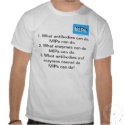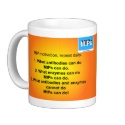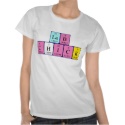|
|
Reference type: Journal
Authors: Zhang H, He H, Li J, Li H, Yao YY
Article Title: Water-Compatible Molecular Imprinting Separation Technique and Its Application in Analytical Chemistry.
Publication date: 2011
Journal: Progress In Chemistry
Volume: 23
Issue: (10)
Page numbers: 2140-2150.
Alternative URL: http://www.progchem.ac.cn/EN/abstract/abstract10734.shtml
Abstract: Molecular imprinting separation technique can effectively separate the target molecules from impurities by specially binding the target molecules based on imitating the way of interaction between antigen and antibody. It is a very promising separation technique. In the traditional molecular imprinting techniques, imprinted polymers are usually prepared for selectively adsorbing the template molecule in organic solvents. However, most of the practical applications of molecular imprinting technique are in aqueous media. Thus, molecular imprinting separation technique in aqueous media receives more and more attention by scientific researchers in recent years. This review covers the recent progress of molecular imprinting separation technique from the following directions: design principle and synthesis methods of imprinted polymers in aqueous media; separation mechanism of water-compatible molecularly imprinted polymers; applications of water-compatible molecular imprinting separation technique in analytical chemistry. Moreover, the existing problems and the outlook of this technique are discussed.
Contents
1 Introduction
2 Preparation of molecularly imprinted polymers in aqueous media
2.1 Water-compatible bulk polymerization
2.2 Water-compatible spherical polymerization
2.3 Water-compatible surface molecular imprinted polymerization in water system
2.4 Preparation of water-compatible molecularly imprinted polymer nanowires
3 Recognition mechanism of water-compatible molecularly imprinted polymers
3.1 Water-compatible molecularly imprinted polym-ers based on electrostatic interaction
3.2 Metal-ion imprinted polymers
3.3 Cyclodextrin molecularly imprinted polymers
4 Application of water-compatible molecular imprin-ting technique in analytical chemistry
4.1 Water-compatible molecularly imprinted sample preparation techniques
4.2 Application in the analysis of trace constituents
4.3 Application in the chiral separation
5 Conclusion and outlook
Template and target information: Review - MIPs for aqueous separations
Author keywords: molecular imprinting technique, water-phase separation, molecularly imprinted polymers (MIP)
|


 MIP motivation T-shirt
MIP motivation T-shirt







 MIP motivation mug
MIP motivation mug







 Lab chick periodic table name shirt
Lab chick periodic table name shirt






